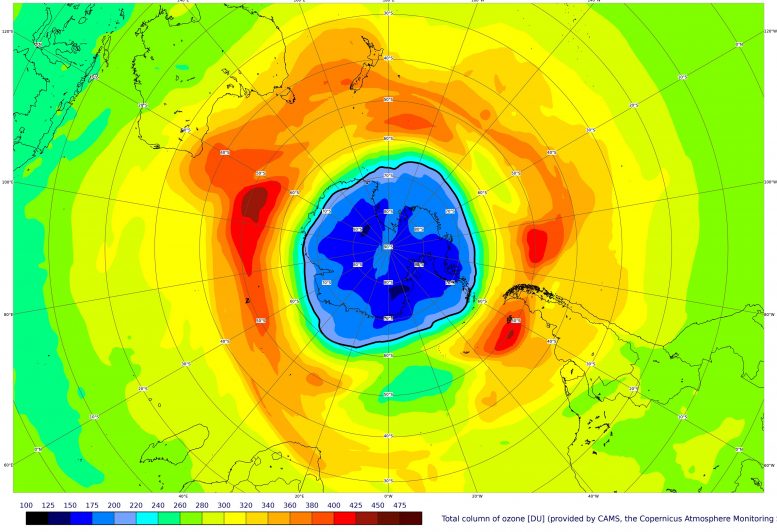
The 2021 ozone hole evolution appears to be similar to last year’s size, currently around 23 million sq km – reaching an extent larger than Antarctica. According to CAMS, the 2021 ozone hole has considerably grown in the last two weeks and is now larger than 75% of ozone holes at that stage in the season since 1979. This map is centered on the Antarctic region. Areas colored yellow, orange, and red depict high ozone values, whereas green and blue areas show low values. Credit: Copernicus Atmosphere Monitoring Service/ECMWF
World governments agreed in the late 1980s to protect Earth’s ozone layer by phasing out ozone-depleting substances emitted by human activities, under the Montreal Protocol. The phase out of these substances has not only helped protect the ozone layer for future generations but has also protected human health and ecosystems by limiting the harmful ultraviolet radiation from reaching Earth. On September 16, the International Day for the Preservation of the Ozone Layer, we take a closer look at this year’s ozone hole.
The ozone layer in the atmosphere protects Earth from potentially harmful ultraviolet radiation. In the 1970s, scientists discovered that the ozone layer was being depleted.
Atmospheric conditions of ozone vary naturally depending on temperature, weather, latitude, and altitude, while substances ejected by natural events such as volcanic eruptions can also affect ozone levels. However, these natural phenomena couldn’t explain the levels of depletion observed and it was discovered that certain human-made chemicals were the cause.
Ozone depletion is greatest at the South Pole. This depletion creates what is known as the ‘ozone hole.’ From August to October, the ozone hole increases in size – reaching a maximum between mid-September and mid-October.
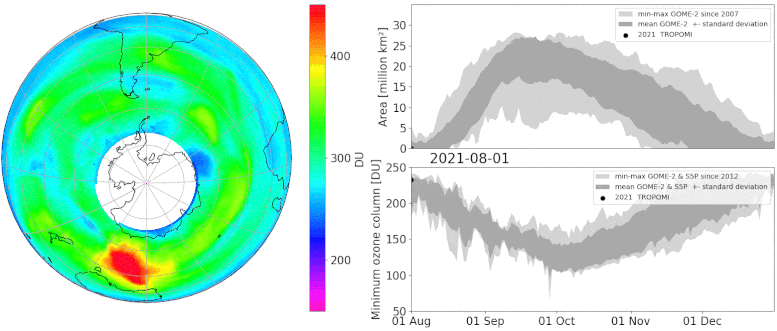
The 2021 ozone hole evolution appears to be similar to last year’s size, currently around 23 million sq km – reaching an extent larger than Antarctica. Credit: Contains modified Copernicus Sentinel data (2021), processed by DLR
The Montreal Protocol was created in 1987 to protect the ozone layer by phasing out the production and consumption of these harmful substances, which is slowly leading to its recovery. Some of the ozone-depleting substances emitted by human activities remain in the stratosphere for decades, meaning that ozone layer recovery is a very slow, long process.
The Montreal Protocol demonstrates the power of international commitment to protecting our environment. Satellite data provide a good means to monitor changes of the ozone layer on global scale. Ozone measurements from the Copernicus Sentinel-5P satellite extend the European time-series that started in 1995 with the Global Ozone Monitoring Experiment (GOME).
These data can be used for long-term trend monitoring and provide ozone measurements just three hours after measurement time to the Copernicus Atmosphere Monitoring Service (CAMS), operated by the European Centre for Medium-Range Weather Forecasts (ECMWF) for ozone monitoring and forecasting.
The ozone hole today
Data from Sentinel-5P was used to show that last year’s ozone hole over the Antarctic was one of the largest and deepest in recent years. The hole grew rapidly from mid-August and peaked at around 25 million sq km (9.7 million sq mi) on 2 October. The large ozone hole was driven by a strong, stable and cold polar vortex which kept the temperature of the ozone layer over Antarctica consistently cold. This was in stark contrast with the unusually small ozone hole that formed in 2019.
This year, the ozone hole’s evolution appears to be similar to last year’s size, currently around 23 million sq km (8.9 million sq mi) – reaching an extent larger than Antarctica. According to CAMS, the 2021 ozone hole has considerably grown in the last two weeks and is now larger than 75% of ozone holes at that stage in the season since 1979.
Antje Inness, a senior scientist at ECMWF, commented, “This ozone evolution is what we would expect given the current atmospheric conditions. The progress of the ozone hole over the coming weeks will be extremely interesting.”
ESA’s Copernicus Sentinel-5P mission manager, Claus Zehner, added, “Sentinel-5P ozone measurements are a key contribution to global ozone monitoring and forecasting in the frame of the Copernicus program.
“The monitoring of the ozone hole over the South Pole must be interpreted carefully as the size, duration, and the ozone concentrations of a single hole are influenced by the local wind fields, or meteorology, around the South Pole. Nevertheless, we expect a closing of the ozone hole over the South Pole by the year 2050.”
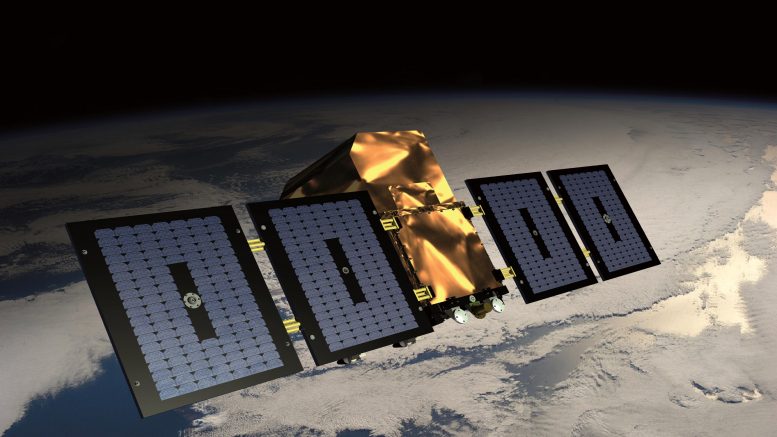
The Atmospheric Limb Tracker for Investigation of the Upcoming Stratosphere (Altius) will deliver high-resolution profiles of stratospheric ozone and other atmospheric trace gases. Credit: QinetiQ Space
Looking ahead
Satellites orbiting above are the only way of measuring the ozone’s recovery and change in a consistent and systematic manner. Most ozone-measuring satellites, such as the Copernicus Sentinel-5P mission, provide a value for the amount of ozone in a column – meaning the total amount of ozone in a column of air from the ground to the top of the atmosphere. In conjunction, profiles, which show concentrations at different altitudes, are also needed to gain the full picture.
The upcoming Atmospheric Limb Tracker for Investigation of the Upcoming Stratosphere (Altius) mission, set to launch in 2025, will deliver profiles of ozone and other trace gases in the upper atmosphere to support services such as weather forecasting, and to monitor long-term trends.
Altius carries a high-resolution 2D imager that observes ozone from side-on, at Earth’s limb or atmospheric boundary. This limb-sounding technique allows ozone to be viewed at different altitudes, thereby providing vertical profiles of different ozone concentrations. As well as ozone, Altius will also deliver profiles of other trace gases such as nitrogen dioxide, water vapor, and aerosol information.


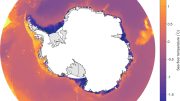

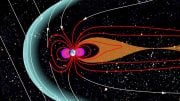

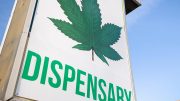


“The phase out of these substances has not only helped protect the ozone layer for future generations but has also protected human health and ecosystems by limiting the harmful ultraviolet radiation from reaching Earth.”
The above dogmatic statement is not only unwarranted, based on observations, but is self serving by crediting the Montreal Protocol for things it has not yet accomplished.
Antarctica and its limited wildlife was never in great danger because the sun never gets directly above the so-called hole, and the weak sunlight has a long slant-range through the atmosphere when the sun is on the horizon prior to the Equinox; the circumpolar vortex typically breaks up shortly after the Equinox and the ozone is replenished rapidly.
What never gets discussed is why there is anomalously high concentrations of ozone just outside the vortex when the concentration never gets that high in the tropics where most of the ozone is generated.
There are still lots of things we don’t know about ozone in the polar stratosphere and yet, those who want to take credit for saving the world talk as if “the science is settled.”
At the very least, it seems that meteorological conditions are more important than ozone levels when it comes to predicting the depth of ozone depletion.
Well said.
Scientists in the 60’s warned that loss of OZONE would cause changes in weather. Hearings in Washington, companies won, claims jobs would be lost. It should have been a start at least. Greedy profiteers. Scientists were vilified in the press comparing them to hippies, putting them in the catagory. So, we now have ozone loss and nothing can bring it back.(as far as I know)
It may never have been gone away. Clearly, from recent behavior, ozone destruction is tied to the presence and strength of the circumpolar vortex, and the temperatures in the ozone layers.
The past increase in the size of the so-called ozone hole, which led to the Montreal Protocol, coincided with the cool temperatures that caused some to speculate that we were on the cusp of another ice age. If the current low solar activity leads to cooling, it will be interesting to see what happens to Antarctic ozone concentration in the Austral Spring.
Incidentally, you said, “So, we now have ozone loss and nothing can bring it back.(as far as I know)” There is reduced ozone concentration during the Winter and early-Spring in Antarctica. However, when the sun reappears and the vortex breaks up, the ozone levels return to essentially the same as it has always been. The ozone doesn’t need to perform its protective role until there is sunlight (It is dark half the year in Antarctica!) falling on the ground.
I get the impression that you really don’t understand the situation.
Your fixation on the Antarctic hole doesn’t reflect the breadth and message of the article, and conflating Antarctic wildlife welfare into a response highlights this. If facts are being ignored, perhaps instead of tearing others down, present your own paper for publication.
Fixation? It was the decline in ozone over the South Pole that was the major impetus for the Montreal Protocol. NASA and the ESA (source of this article) routinely report on the status of the annual Antarctic ozone decline. The title of the article is, “What’s Going On With Earth’s Ozone Hole?” Note that “Hole” is singular. As to “tearing others down,” I’m not addressing any individual(s), rather, responding to a publicly-funded agency stating their position. If I were critiquing a peer-reviewed publication, I would address my concerns to the authors. That is how the Scientific Method works.
You are naive if you think that there is much of a chance for a retired scientist to get published. Besides, there are often publishing costs, such as for illustrations, that an academic department would have a budget for. It would have to come out of my fixed retirement income were I to have an opportunity to be published. This is an economical alternative.
As to the commenter making wild, unsubstantiated claims, that doesn’t warrant a published article.
“A new report of a massive ozone layer hole, ocean dead zones, collapsing fishing industries, rapidly declining crops, dwindling supply chains and societal lockdowns, when will the masses recognize how the puzzle pieces fit together? How should we expect those in power to respond? Will the constant stream of corporate media propaganda be successful at keeping the population’s epidemic of normalcy bias alive till the last possible moment? Or will rapidly rising challenges finally trigger the long overdue societal awakening?
All are needed in the critical battle to wake populations to what is coming, we must make every day count. Share credible data from a credible source, make your voice heard. Awareness raising efforts can be carried out from your own home computer.”
-Dane Wigington https://www.geoengineeringwatch.org/ Latest transmission: https://www.youtube.com/watch?v=kaJVIdYmB0I
“Share credible data from a credible source, make your voice heard.”
I’m doing my best. However, one person can only do so much!
Ban Freons. Oh. Ban orange juice, French horns, Canadian whisky, and disinfecting wipes. Ban empirical reality and other reGRETAble observables.